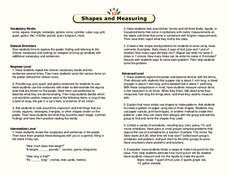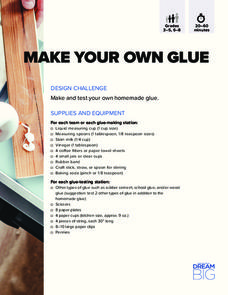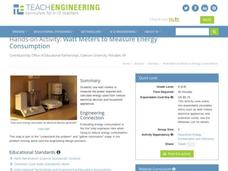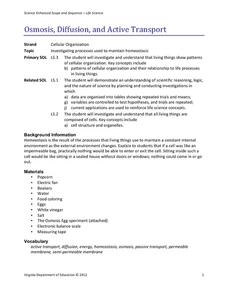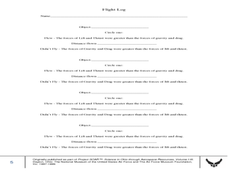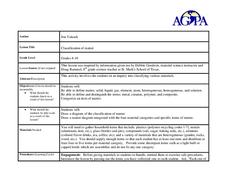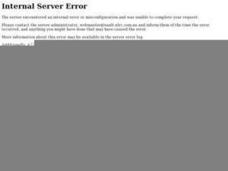Curated OER
Measuring Around the House!
Trying to approach measuring in a fun and interactive way? You found it! This worksheet has young learners first cut out two "rulers" - one with simple units marked, and another with blank squares. They begin by going around their house...
Space Awareness
Measure the Solar Diameter
Scientists could measure the diameter of the sun before they knew its distance. Scholars construct a simple mirror box to measure the diameter for themselves. They compare this measurement with the official size, listed in a textbook,...
Curated OER
Makeshift Measuring Tools
Fifth graders practice measuring items with unique tools. In this length lesson plan, 5th graders examine several household items and must decide if they want to use a pencil width, piece of paper, or their thumb to measure the item....
Curated OER
Kitchenware: ESL Lesson, Beginning Level
With words like silverware, measuring cups, and pressure cooker, this presentation will help your ESL learners find their way around the kitchen. Each slide features one item found in a kitchen, as well as an explanatory illustration,...
Curated OER
The Introduction and Diffusion of Household Technology
Young scholars conduct research and develop a matrix demonstrating the introduction and spread of common household items from 1900 to 2000 in the U.S. They conduct Internet research, watch and discuss a video, and develop the matrix.
MENSA Education & Research Foundation
Pi Day Fun!
In this multi-faceted introduction to pi, participants perform a bevy of pi-related activities. Ranging from measuring household items to singing pi songs and reading pi stories, this fun and non-intimidating resource serves to bring up...
Houghton Mifflin Harcourt
Shapes and Measuring
Youngsters develop mathematical vocabulary with this worksheet. First, give youngsters time to identify their vocabulary words in the picture provided. Then, as a group, practice saying the vocabulary words aloud. Finally, have learners...
DiscoverE
Make Your Own Glue
You won't regret being stuck with this activity. By mixing a variety of household items, pupils create their own glue. They test the tensile strength of their glue and compare it to that of other adhesives.
Teach Engineering
Watt Meters to Measure Energy Consumption
It used watt amount of energy? This resource investigates the power usage of small household appliances. Using a watt meter, groups measure the actual wattage used by an appliance and then calculate the energy used daily.
Curated OER
English Measurement System
Students determine how to convert measurement. For this English Measurement lesson, students discover interesting facts about the history of measurement. Students study formulas and practice using them.
Virginia Department of Education
Osmosis, Diffusion, and Active Transport
No, it really is okay to play with your food! Emerging scientists manipulate popcorn, eggs, and other household objects as they demonstrate multiple cellular processes. The activity, capable of modifications, is designed to reflect the...
Curated OER
Household Things that Fly and Why!!!
Students examine the four forces of flight. In this flight lesson, students test to see which types of items will fly. Students make predictions on whether the item will fly or not. Students gain knowledge about lift, gravity, thrust and...
Curated OER
Math is Everywhere: Part 2
Second graders identify shapes and measurements in everyday life. In this measurement lesson, 2nd graders locate rectangles in their classroom and use standard and nonstandard forms to measure them. Students view a video clip...
Curated OER
Classification of Matter
Students investigate common household items and classify them into types of matter. In this matter lesson, students group given items into categories based on their characteristics. They also complete a concept map about matter and...
Curated OER
Designing An Investigation
Students will design a scientific investigation. In this engineering design instructional activity, students will set up an investigation, collect data and form a conclusion about bridge design. They will use common household items to...
Curated OER
Rain and Rainbows
Students explore the weather system by analyzing water properties. In this precipitation lesson plan, students review weather related vocabulary terms and discuss how rainbows are created by light hitting droplets at the right time....
Curated OER
World of Plastics and Polymers
Young scholars investigate plastics and learn they are giant molecules made of carbon atoms. In this polymers and plastics lesson, students perform 3 activities which all include making polymers from household items such as milk and...
Lawrence Hall of Science
DIY Sun Science
Get an up-close-and personal look at the sun from the safety of your classroom with this fun science application. Offering numerous activities, images, and videos, the resource supports children of all ages as they learn about the sun.
Curated OER
Conductive Heat Transfer Experiments
Learners conduct a variety of experiments to see how heat is transferred using common household objects. The teacher uses the safety plans included in the lesson plan. This is ideal for inexperienced Science teachers.
UAF Geophysical Institute
Carbon Footprint
Your young environmentalists can calculate their carbon footprint and discuss ways to reduce it with a worksheet about climate change. After reading a handout about what impact one's carbon footprint can have on the environment, kids...
Curated OER
What's It Worth? Thinking About Weights and Measures
Students examine how weights and measures can be used to assess value, that traders must be wary of fraudulent practices, and appreciate the Akan weights as works of art.
Curated OER
Estimating Volumes Of Household Containers
Students engage in a the estimation of volume for household containers and focus upon the usage of the metric system. They practice identifying the shapes that seem familiar and match shapes with quantities. Students interact with others...
Curated OER
The Colors of Chemistry
Students investigate the acidity and alkalinity of common household products in an experiment. They use red cabbage juice and litmus paper to show the difference between strong acids and bases as they work with vinegar, dish washing...
Curated OER
Artifacts We Don't Dig Up
Students play a game of artifact show and tell using household items.








